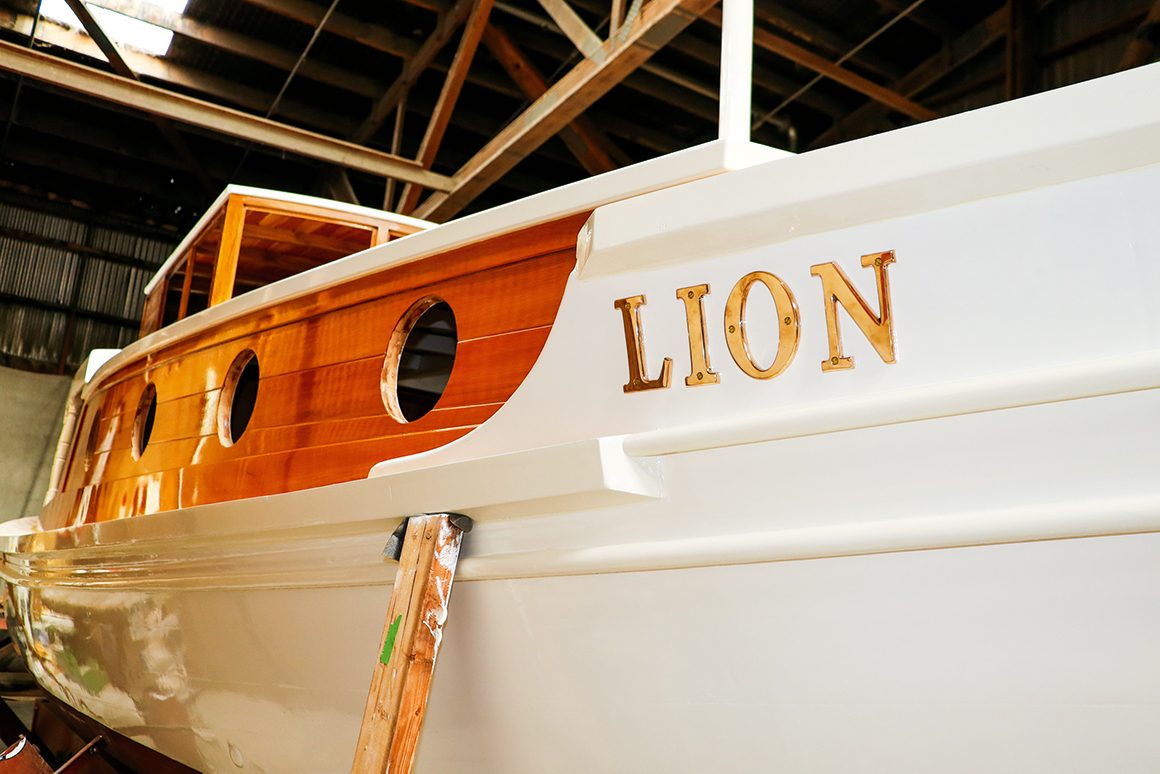

A launch built for Lake Wakatipu 108 years ago is in the final stages of a full restoration, a project that’s demanded intricate boatbuilding skills from a bygone era. Particularly impressive is the shipwright’s preservation of her period styling – there’s even a Victorian toilet. Story by Lawrence Schaffler.
Inviting your guests to settle their backsides on so fair a face is likely to be greeted with a nervous cough these days, but they will hopefully understand that life was less complicated a century ago. Whatever the sentiments, the ancient porcelain looks right at home – even though the 38-foot Lion probably didn’t have a toilet when she was first launched.
The vessel (kauri planking over kauri/kowhai ribs) was built in 1912 by Dunedin’s James McPherson for Queenstown’s Hugh MacKenzie – one of the region’s most innovative farmers – for getting around Lake Wakatipu.

MacKenzie ran sheep on the nearby Walter Peak, Fernhill and Mt Nicholas stations and, among other duties, the boat would carry supplies/materials between these outposts and Queenstown. She was fitted with a three-cylinder, 21hp Clifton engine and her canoe-stern hull was designed for the lake’s choppy and unpredictable waters.
Though she changed hands a few times over the next century, she remained in the Queenstown area, used for recreational fishing/cruising on Lake Wakatipu and, with a later owner, on Lake Manapouri. But time eventually caught up with the old lady and by 2018 she was badly in need of a makeover – and a lot more than a cosmetic cut-tuck-and-lift.

The restoration’s fallen to Invercargill’s Graham Caird – a shipwright with some 40 years’ experience who through happy coincidence is well-acquainted with the vessel, having previously repaired her on various occasions for different owners.
“I first met Lion about 20 years ago when her then owner – Queenstown’s Kevin Sexton – began a DIY restoration project. The most important part of that meeting was me managing to stop him from continuing to caulk the hull with urethane. He’d done the sides and was about to start on the underwater sections. I said if you carry on you’ll ruin the boat and I’ll never speak to you again.
“He persuaded me to come up from Invercargill to caulk the underwater sections. It took me a few days. I tried to remove the urethane but it was impossible – breaking it out damaged the seams – I had to leave it.”
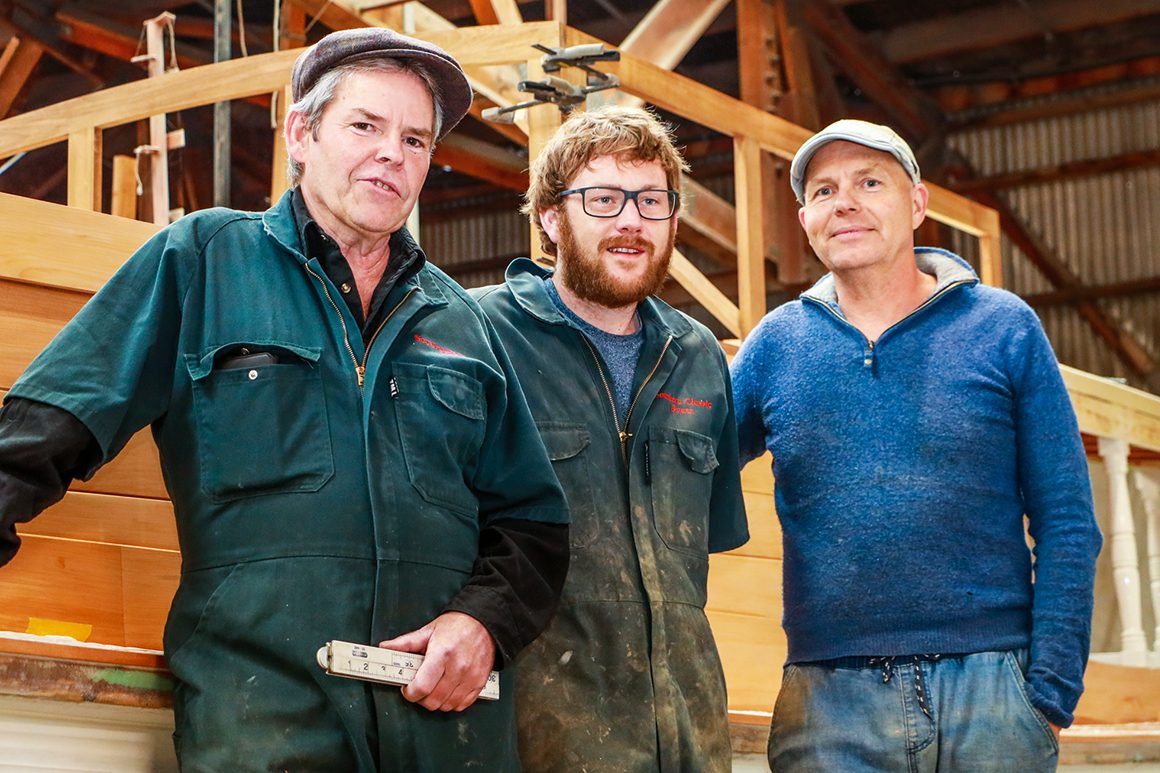
About five years later Sexton sold the boat to a chap who owned a farm at Manapouri. Lion was transferred to Lake Manapouri and while there the new owner got Caird to tackle a number of repairs – some new hull planking and rib replacements – and a general tidy-up.
Late in 2018 the boat was sold to her current Queenstown owner. A classic boat enthusiast well-acquainted with Caird’s reputation, he opted to truck the boat to the Invercargill shed for a full restoration, to her original specification.
It required extensive work – an entirely new interior, replacing rotten ribs, plenty of new planking (steamed/bent into shape and scarfed to existing timber), new decks, plumbing and electrics – and rebuilding the 51hp Yanmar diesel. Just some of the items on the lengthy to-do list.
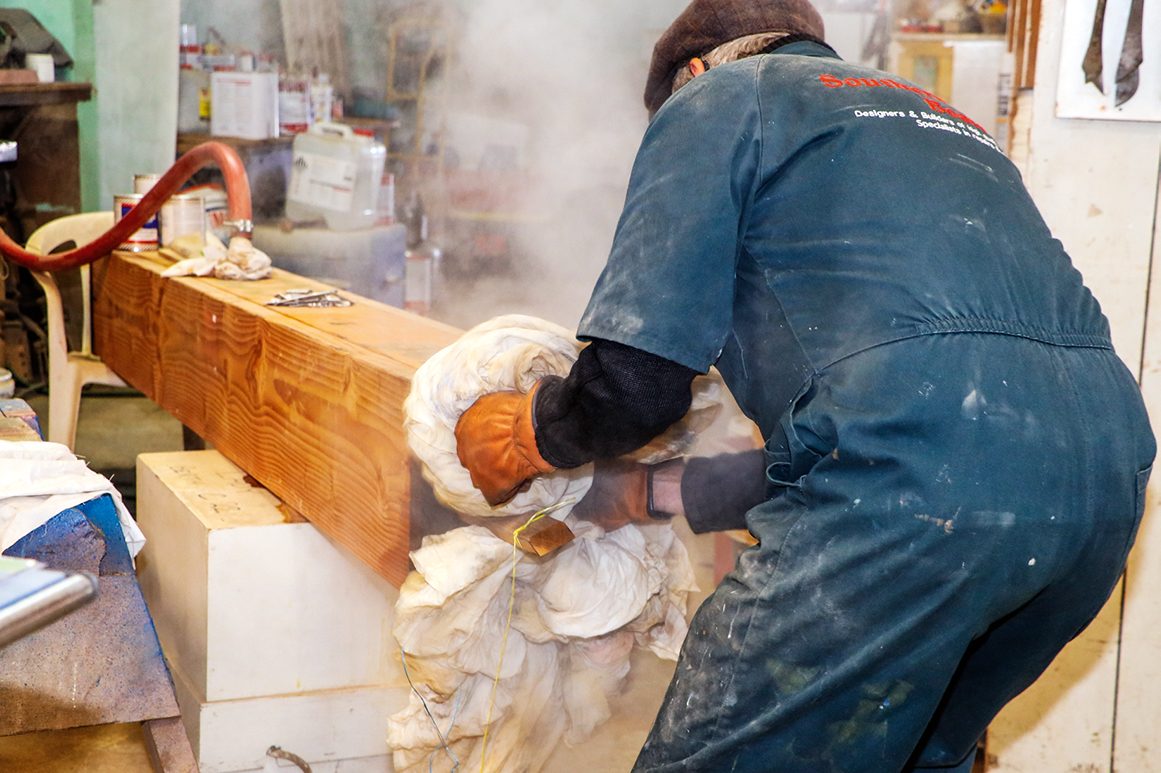
As with many boats of her vintage, Lion had been modified in various ways over the years and meeting the ‘original specification’ brief proved tricky given the lack of original drawings or plans. But working from an early photo (taken soon after the 1912 launching), it was obvious that the wheelhouse/cabin top had been changed significantly – and understandably so, says Caird.
“The original cabin top was a little box – just big enough for the skipper to stand and steer the boat – without room for anyone else. The modification (date unknown) was out of character and rotten to boot. Having removed it we decided to adopt a little ‘poetic license’ for the replacement – creating more space without losing the aesthetics of the original design.”
INTERIOR
The new wheelhouse is the boat’s only (and very slight) design change. While the entire interior has been rebuilt, its structure has remained faithful to her heritage.
“Having removed the cabin top we stripped out everything, reusing only the original kauri seats in the cockpit,” says Caird. “The project required plenty of either new or recycled kauri – very difficult to source down here in Southland. But we eventually succeeded, and now have solid kauri tongue-and-groove panelling, framing, bulkheads, floorboards, ribs and planking. Just as she was in 1912.”
The severe damage to the ribs and planking, he says, was caused by an earlier owner who’d lost interest in the boat. “From what I can gather, she lay on her side in paddock for many years – the starboard aft quarter featured a puddle of stagnant water complete with growing vegetation. I re-ribbed the back quarter from the bulkhead to the stern – about 30 or 40 ribs – and replaced much of the planking.
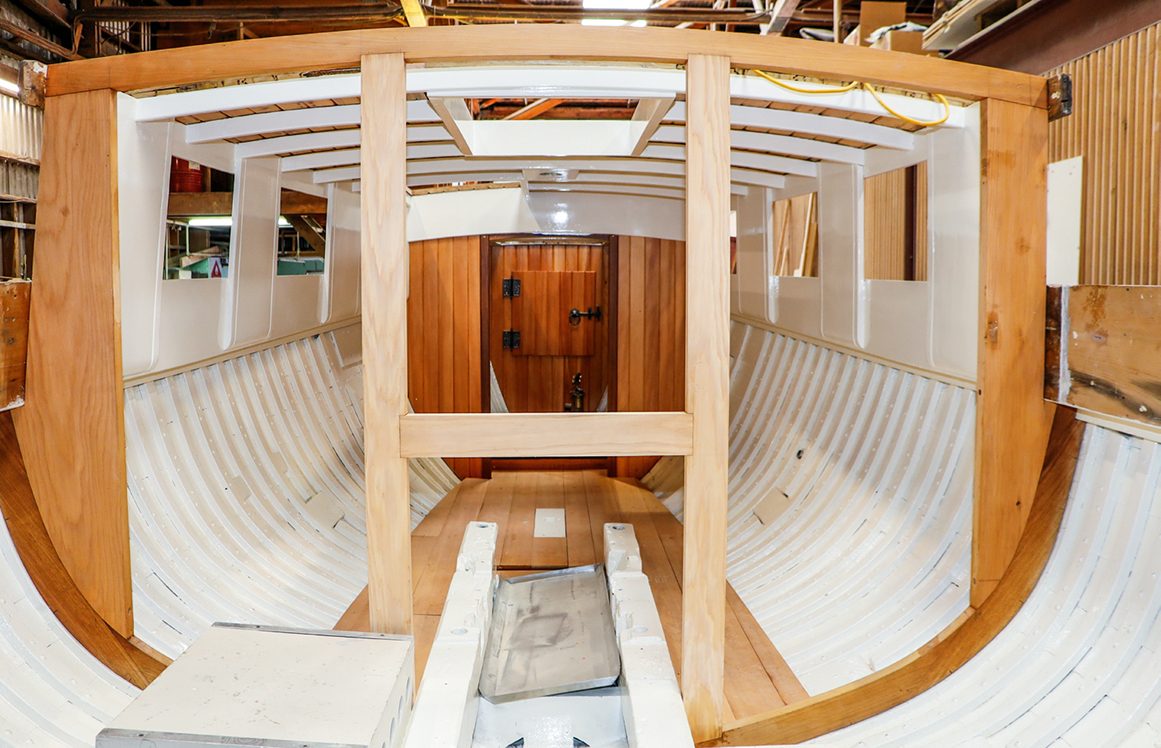
“I scarfed the new timber on to the ends of the good timber and with this sort of work I always put a butt block behind the scarf and copper nail and rove it through – to provide additional strength.”
Most of the deck has been rebuilt and refastened and, to stop water ingress, Caird elected to cover it with fibreglass – 600gram double-bias cloth “just to make sure it would never leak again.” A layer of 16mm kauri planking finishes the deck.
The 51hp Yanmar was full of water and had to be completely rebuilt (by Invercargill marine engineering shop Gough Brothers).
Because Lion is to be used as a picnic day-boat (rather than for overnighting), the makeshift galley has been eliminated, though a small electric fridge has been added to keep the beer at the right temperature. Electronics have been kept to a minimum to retain the boat’s character – for example there is no installed VHF radio, depth sounder or music system – and what little electronic accessories there are have been mounted very discreetly.

To retain Lion’s period styling, Caird scoured the country’s antique shops over many months, sourcing brassware, handles and switches. His finds included an antique Captain’s chair which will be mounted on a swivel mechanism.
Where original fittings were unavailable – such as for the portholes – new bronze models were cast and aged by Auckland’s Metabronze Industries.
His forays also uncovered the rare toilet at Christchurch’s Pump House salvage yard. The entire unit – including its delicate bronze macerator pump – has been repaired and restored and will have pride of place in the bathroom up in the bow. It was only sold to Caird because it was for a heritage vessel – and it is truly a throne fit for a queen.
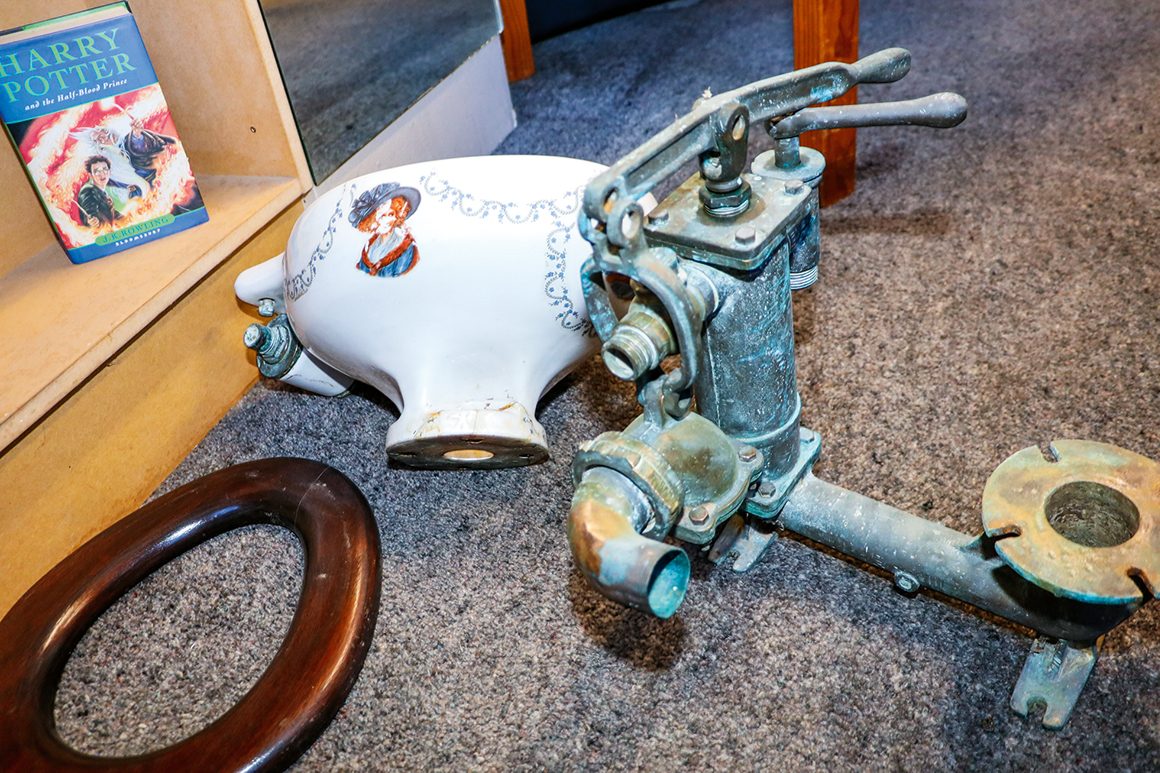
TRADITIONAL SKILLS
For Caird, restoring Lion has underscored the growing scarcity of traditional boatbuilding skills in New Zealand – a subject of grave concern for him.
“I’m not getting any younger and to make matters worse I fell off my motorbike halfway through the project – so was operating with restricted movement. Fortunately, I’ve found an excellent apprentice who’s as passionate about these old boats as I am – so I’m training him and kind of handing over the baton.
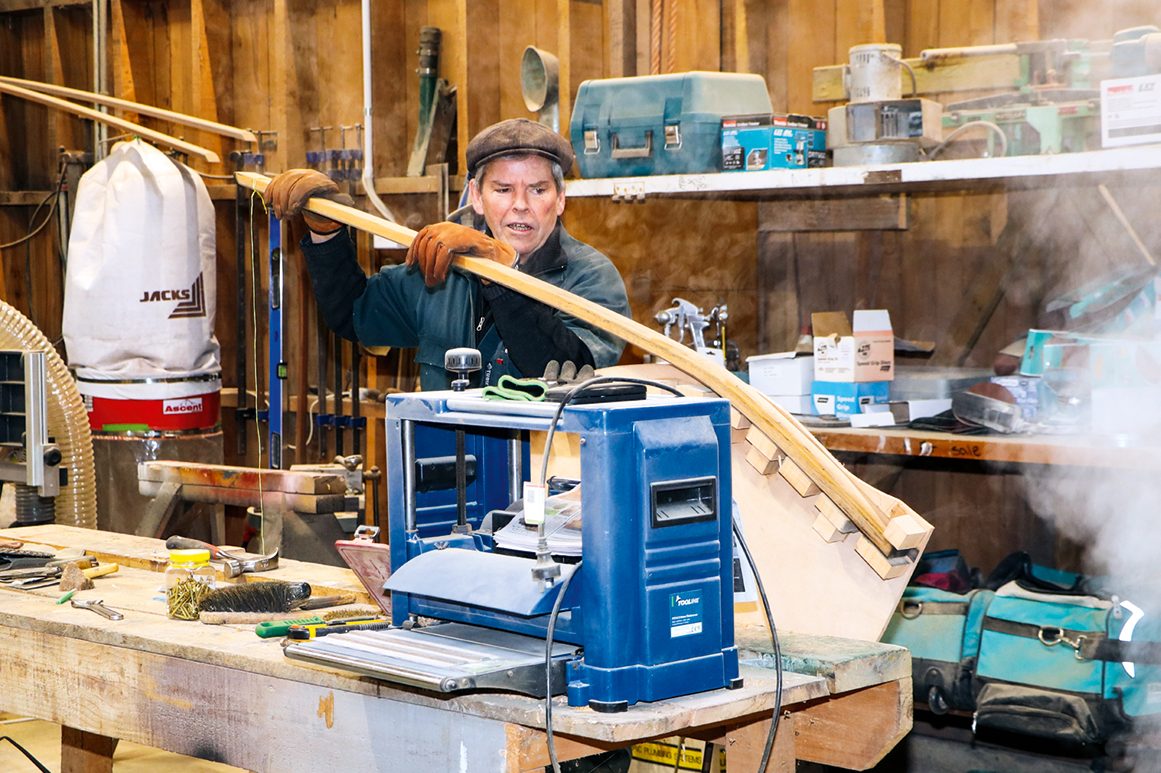
“But I fear for our marine heritage – there are scores of these old boats that need work. It’s very specialised work – and I think as an industry we need to invest more time and money into growing a suitably-qualified corps of craftsmen. It would be a real shame to let these beautiful old vessels rot in obscurity.”
For Lion, at least, salvation has come in the nick to time.




